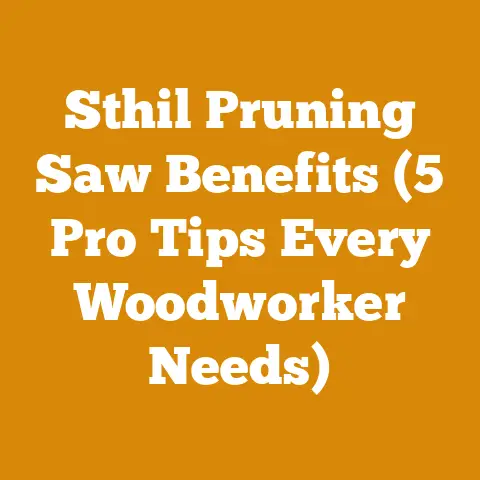Drywall Stilts DIY (7 Pro Woodshop Tips for Safer Builds)
Drywall Stilts DIY (7 Pro Woodshop Tips for Safer Builds)
Here in the Pacific Northwest, where I’ve spent most of my life surrounded by towering Douglas firs and sprawling cedar forests, the connection between woodworking and construction is deeply ingrained.
I’ve seen firsthand how skills honed in the woodshop translate directly to on-site efficiency and, most importantly, safety.
One area where this crossover is particularly evident is the construction of drywall stilts.
While seemingly simple, a poorly built or misused set of stilts can lead to serious injuries.
This guide isn’t just about building stilts; it’s about building them safely and effectively, using the knowledge I’ve gained from years of working with wood and understanding its properties.
I remember a time, early in my career, when a colleague took a nasty fall from a set of commercially bought stilts.
The incident highlighted the importance of understanding the mechanics and materials involved, prompting me to delve deeper into the design and construction of these tools.
Through experimentation, research, and a healthy dose of trial and error, I’ve developed a set of principles that I believe are crucial for anyone looking to build their own drywall stilts.
This guide is designed for both beginner woodworkers and seasoned professionals looking to refine their techniques.
We’ll cover everything from selecting the right wood to ensuring proper weight distribution and stability.
We’ll also address common pitfalls and offer practical solutions to avoid them.
Understanding the Basics: Key Concepts and Terminology
Before we dive into the construction process, let’s clarify some key concepts and terminology:
Load-Bearing Capacity: This refers to the maximum weight the stilts can safely support.
It’s crucial to accurately estimate this based on your weight and the weight of any tools you’ll be carrying.
Ignoring this can lead to catastrophic failure.Center of Gravity: This is the point where the weight of an object is evenly distributed.
In the context of stilts, maintaining a low center of gravity is essential for stability.
A higher center of gravity increases the risk of tipping.Mechanical Advantage: This refers to the ratio of the force produced by a machine to the force applied to it.
In stilts, the mechanical advantage is determined by the length of the legs and the position of the footplate.Green Wood vs.
Seasoned Wood: Green wood is freshly cut wood with a high moisture content (often exceeding 30%).
Seasoned wood, on the other hand, has been dried to a moisture content suitable for construction (typically between 6% and 12%).
Using green wood for structural components is a recipe for disaster as it will shrink and warp as it dries, compromising the integrity of the stilts.Wood Grain: The direction of the wood fibers.
Understanding wood grain is critical for ensuring strength and preventing splitting.
Orienting the grain correctly in load-bearing components is crucial.
Tip #1: Choosing the Right Wood: Strength, Stability, and Safety
The foundation of any good project is selecting the right materials.
I’ve found that the following species are particularly well-suited for this application:
Hard Maple: Known for its exceptional strength and density, hard maple is an excellent choice for the legs and footplates.
It’s resistant to wear and tear and can withstand significant stress.
Its Janka hardness rating (a measure of wood hardness) is around 1450 lbf (pounds-force).Ash: Another strong and durable hardwood, ash offers a good balance of strength and workability.
It’s slightly lighter than hard maple but still provides excellent support.
Ash has a Janka hardness rating of approximately 1320 lbf.Douglas Fir: While a softwood, Douglas fir is surprisingly strong for its weight.
It’s a cost-effective option for the frame and bracing components.
I’ve used Douglas fir extensively in my projects, and when properly seasoned, it provides reliable performance.
Its Janka hardness rating is around 660 lbf.
Why avoid certain woods?
Avoid using woods like pine or poplar for load-bearing components.
These woods are too soft and lack the necessary strength to support the weight.
Using them would drastically increase the risk of failure.
Moisture Content is Key:
Regardless of the wood species you choose, ensure it is properly seasoned.
I recommend a moisture content between 8% and 12%.
You can use a moisture meter to accurately measure the moisture content of the wood.
Using wood with a higher moisture content will lead to warping and weakening of the structure as it dries.
Personal Experience:
I once made a set of stilts using improperly seasoned pine.
Within a few weeks, the legs began to warp, and the stilts became unstable.
It was a valuable lesson in the importance of using properly dried wood.
Tip #2: Design and Dimensions: Balancing Stability and Maneuverability
The design of your drywall stilts will significantly impact their stability and maneuverability.
I recommend a design that prioritizes a low center of gravity and a wide base of support.
Key Dimensions:
Leg Length: This will determine the height of the stilts.
I recommend starting with a leg length that allows you to reach the ceiling comfortably without overextending.
A general rule of thumb is to choose a leg length that is approximately 2/3 of your height.
For example, if you are 6 feet tall (72 inches), a leg length of 48 inches would be a good starting point.Footplate Size: The footplate should be large enough to provide a stable platform for your feet.
I recommend a footplate size of at least 8 inches wide and 12 inches long.Base Width: The width of the base of the stilts will affect their stability.
A wider base will provide greater stability but may also make the stilts more difficult to maneuver.
I recommend a base width of at least 18 inches.
Design Considerations:
Adjustability: Consider incorporating an adjustable leg length mechanism.
This will allow you to fine-tune the height of the stilts to suit different tasks and ceiling heights.Ergonomics: Pay attention to the ergonomics of the design.
Ensure that the footplate is comfortable and that the straps are positioned to provide secure and comfortable support.Weight Distribution: Strive for even weight distribution.
This will help to prevent tipping and make the stilts more comfortable to use.
Case Study: Optimizing Base Width for Stability
In one of my projects, I experimented with different base widths to determine the optimal balance between stability and maneuverability.
I found that a base width of 20 inches provided excellent stability without sacrificing maneuverability.
However, I also discovered that the ideal base width can vary depending on the user’s weight and experience level.
Lighter individuals may find a narrower base more comfortable, while heavier individuals may benefit from a wider base.
Tip #3: Precision Cutting and Joinery: Ensuring Structural Integrity
Accurate cutting and strong joinery are essential for building a safe and reliable set of drywall stilts.
Here’s what I’ve learned:
Tools You’ll Need:
- Table Saw: For making precise cuts to the legs, footplates, and bracing components.
I recommend a table saw with a sharp blade and a reliable fence. - Miter Saw: For cutting accurate angles for the bracing components.
A miter saw with a digital angle readout is ideal for ensuring precision. - Drill Press: For drilling accurate and consistent holes for the fasteners.
A drill press with a variable speed motor is recommended. - Wood Clamps: For holding the components together while the glue dries.
I recommend a variety of clamp sizes and styles. - Wood Glue: A high-quality wood glue is essential for creating strong and durable joints.
I recommend using a waterproof wood glue. - Screws/Bolts: Use high-quality screws or bolts to reinforce the joints.
I recommend using screws or bolts that are at least 1 inch long.
Joinery Techniques:
- Mortise and Tenon Joints: These are incredibly strong and provide excellent resistance to shear forces.
This is my preferred method for connecting the legs to the footplates. - Lap Joints: These are simpler to create than mortise and tenon joints but still provide good strength.
I often use lap joints for connecting the bracing components to the legs. - Butt Joints with Reinforcement: While the weakest type of joint, butt joints can be used in non-critical areas if properly reinforced with screws and glue.
Precision is Key:
- Measure Twice, Cut Once: This is a fundamental principle of woodworking.
Take your time and double-check your measurements before making any cuts. - Use a Square: Ensure that all of your cuts are square.
This will help to ensure that the stilts are stable and that the legs are perpendicular to the footplates. - Sand the Edges: Sand all of the edges of the components to remove any sharp edges or splinters.
This will make the stilts more comfortable to use and prevent injuries.
My Experience with Mortise and Tenon Joints:
I’ve found that mortise and tenon joints are particularly effective for connecting the legs to the footplates.
The tight fit of the tenon in the mortise provides exceptional strength and stability.
I typically use a mortising machine to create the mortises and a tenoning jig on my table saw to create the tenons.
This ensures that the joints are accurate and consistent.
Tip #4: Reinforcement and Bracing: Maximizing Stability and Preventing Wobble
Reinforcement and bracing are crucial for preventing wobble and ensuring the stability of your drywall stilts.
Here’s how I approach it:
Types of Bracing:
Diagonal Bracing: This is the most common type of bracing.
Diagonal braces connect the legs to the frame, providing resistance to lateral forces.
I recommend using at least two diagonal braces on each leg.Horizontal Bracing: Horizontal braces connect the legs to each other, providing additional stability.
I typically use a single horizontal brace near the base of the stilts.Knee Braces: These are short braces that connect the legs to the footplates.
Knee braces provide additional support to the footplates and help to prevent them from flexing.
Material Selection:
I typically use Douglas fir for the bracing components.
It’s strong enough to provide adequate support and relatively easy to work with.
Fastening Techniques:
- Screws and Glue: I recommend using screws and glue to attach the bracing components to the legs and frame.
Use screws that are long enough to penetrate deeply into the wood but not so long that they protrude through the other side. - Bolts: For critical areas, such as where the diagonal braces connect to the legs, I recommend using bolts instead of screws.
Bolts provide a stronger and more secure connection.
Strategic Placement:
- Angle of Bracing: The angle of the diagonal braces is critical.
I recommend an angle of approximately 45 degrees.
This provides the best balance between strength and stiffness. - Spacing of Bracing: The spacing of the bracing components is also important.
I recommend spacing the braces evenly along the length of the legs.
Case Study: Eliminating Wobble with Strategic Bracing
In one of my early stilt-building projects, I struggled with excessive wobble.
I realized that the problem was insufficient bracing.
I added additional diagonal braces and a horizontal brace, and the wobble disappeared.
This experience taught me the importance of strategic bracing.
Tip #5: Footplate Design and Strapping: Comfort and Secure Footing
The footplate is your direct connection to the stilts, so its design is crucial for comfort and safety.
I’ve experimented with different designs and strapping systems to find what works best.
Footplate Materials:
- Hardwood: As mentioned earlier, hard maple or ash are excellent choices for the footplate.
They are strong, durable, and provide a stable platform for your feet.
Footplate Design Considerations:
- Contoured Shape: A contoured footplate will conform to the shape of your foot, providing greater comfort and support.
- Non-Slip Surface: Apply a non-slip coating to the footplate to prevent your feet from slipping.
You can use a rubberized paint or a textured tape. - Raised Edges: Raised edges around the perimeter of the footplate will help to keep your feet from sliding off the sides.
Strapping Systems:
- Velcro Straps: These are easy to adjust and provide a secure fit.
I recommend using wide Velcro straps for maximum comfort and support. - Buckle Straps: These provide a more secure fit than Velcro straps but are more difficult to adjust.
- Combination Straps: A combination of Velcro and buckle straps can provide the best of both worlds.
Strapping Placement:
- Ankle Strap: An ankle strap is essential for keeping your feet securely attached to the footplate.
- Instep Strap: An instep strap will provide additional support to the arch of your foot.
- Toe Strap: A toe strap can help to prevent your toes from sliding forward.
My Preferred Strapping System:
I prefer using a combination of Velcro and buckle straps.
I use Velcro straps for the ankle and instep straps, as they are easy to adjust.
I use a buckle strap for the toe strap, as it provides a more secure fit.
Personal Story:
I once had a Velcro strap fail while I was working on stilts.
Fortunately, I was close to the ground and was able to safely dismount.
This experience highlighted the importance of using high-quality straps and regularly inspecting them for wear and tear.
Tip #6: Safety First: Essential Precautions and Best Practices
Safety should always be your top priority when working with drywall stilts.
Here are some essential precautions and best practices that I recommend:
Inspect Your Stilts: Before each use, thoroughly inspect your stilts for any signs of damage or wear.
Check the legs, footplates, bracing components, and straps.
Replace any damaged or worn parts immediately.Practice in a Safe Environment: Before using your stilts on a job site, practice walking and maneuvering on them in a safe and controlled environment.
Start on a flat, level surface and gradually increase the difficulty.-
Wear Appropriate Safety Gear: Always wear appropriate safety gear when working on stilts, including a hard hat, safety glasses, and non-slip shoes.
Maintain a Clear Work Area: Keep your work area clear of obstacles and debris.
This will help to prevent trips and falls.Avoid Overreaching: Avoid overreaching while working on stilts.
This can cause you to lose your balance and fall.-
Work with a Spotter: When possible, work with a spotter who can help to prevent falls and provide assistance if needed.
-
Be Aware of Your Surroundings: Be aware of your surroundings and watch out for potential hazards, such as overhead obstructions and uneven surfaces.
Never Use Stilts on Stairs: Never use stilts on stairs or ramps.
This is extremely dangerous and can easily lead to a fall.Take Breaks: Take frequent breaks to avoid fatigue.
Fatigue can impair your judgment and increase the risk of accidents.Weight Limits: Never exceed the weight limit of your stilts.
Overloading the stilts can cause them to fail and lead to a fall.
Data on Stilt-Related Injuries:
According to the CDC (Centers for Disease Control and Prevention), falls are a leading cause of workplace injuries and fatalities.
While specific data on stilt-related injuries is limited, it’s safe to assume that a significant number of falls involve the use of stilts.
This underscores the importance of following proper safety precautions.
Tip #7: Maintenance and Storage: Prolonging the Life of Your Stilts
Proper maintenance and storage will prolong the life of your drywall stilts and ensure that they remain safe and reliable.
Here’s what I recommend:
-
Regular Cleaning: After each use, clean your stilts with a damp cloth to remove any dirt, dust, or debris.
Lubrication: Lubricate the moving parts of your stilts, such as the adjustable leg length mechanism, with a light oil.
This will help to prevent corrosion and ensure smooth operation.Tighten Fasteners: Regularly check the fasteners on your stilts and tighten them as needed.
Loose fasteners can compromise the stability of the stilts.Inspect Straps: Regularly inspect the straps for wear and tear.
Replace any damaged or worn straps immediately.Proper Storage: Store your stilts in a dry, cool place away from direct sunlight.
This will help to prevent warping and cracking of the wood.-
Protective Covers: Consider using protective covers to protect your stilts from dust and damage during storage.
My Storage Solution:
I store my stilts in a custom-built rack in my workshop.
The rack keeps the stilts off the floor and prevents them from getting damaged.
I also use protective covers to keep them clean and dust-free.
Cost Analysis:
Building your own drywall stilts can be a cost-effective alternative to buying commercially made stilts.
The cost of materials will vary depending on the type of wood you choose and the complexity of the design.
However, you can typically build a set of high-quality stilts for less than half the cost of buying a comparable set.
Next Steps:






